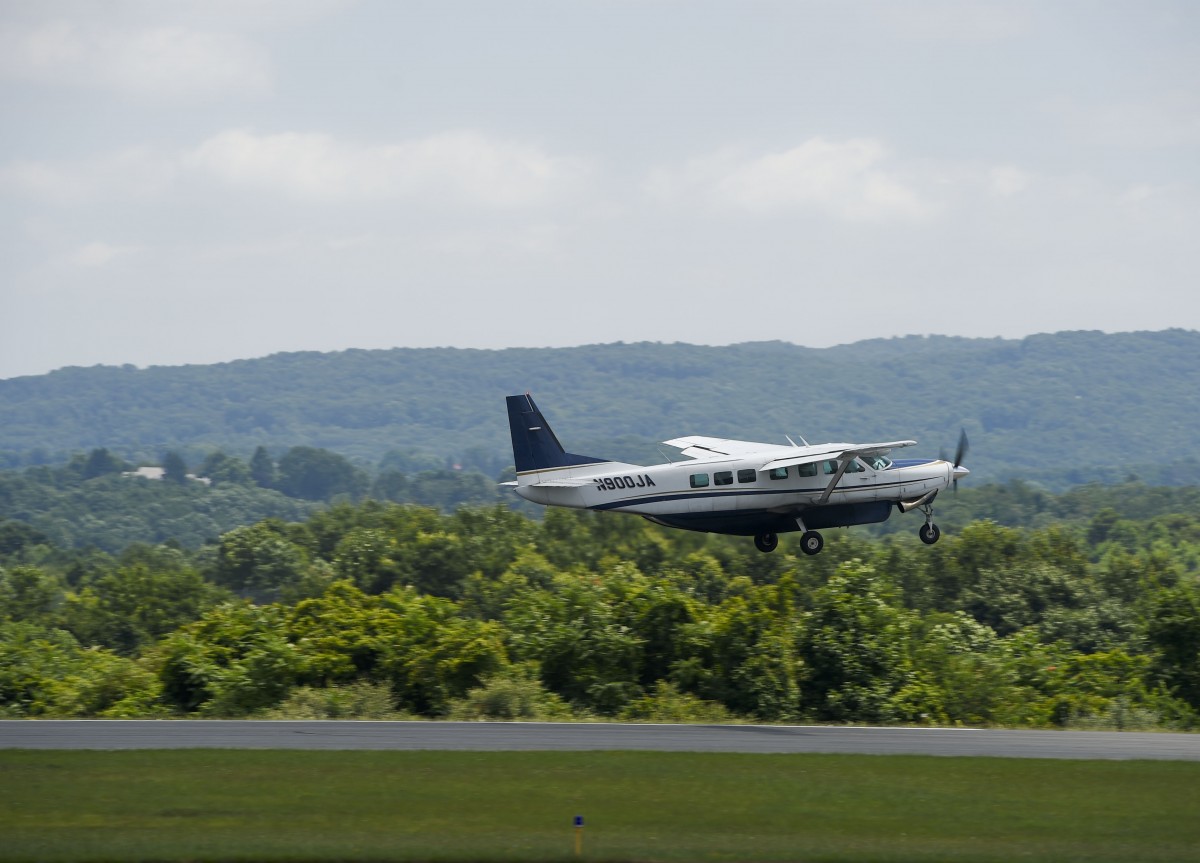MORGANTOWN — For the second year running, the City of Morgantown must convince the United States Department of Transportation not to pull millions in federal funding — nearly $3 million in 2018 — from the Morgantown Municipal Airport.
The city was served documents from the DOT on March 29 explaining that its municipal airport was included on a list of those scheduled to lose Essential Air Service (EAS) eligibility.
Essential Air Service is a federal program enacted to ensure smaller communities maintain access to commercial air service.
However, in Morgantown’s case, the airport’s DOT subsidy through EAS has exceeded the $200 per passenger threshold for a second consecutive year. Further, Morgantown’s numbers are trending in the wrong direction.
Because the Morgantown Municipal Airport is within 210 miles of the nearest medium or large hub airport — Pittsburgh’s airport is 75 miles away — it must hit the $200/passenger mark or receive a USDOT waiver to remain in the EAS program.
According to documents provided by the DOT, Morgantown received a subsidy of $2.989 million in fiscal year 2018. That number divided by the 10,605 enplanements and deplanements — basically the number of people getting on and off an airplane in Morgantown — is $282 per passenger.
Morgantown also failed to meet the $200/passenger threshold in fiscal year 2017, when its DOT subsidy per passenger was $210.
The city successfully lobbied the DOT to let it remain in the EAS program for the past 11 months.
City Manager Paul Brake said he’s confident the city can successfully make its case once again.
“We will be putting together the best possible response and input from industry experts to make a compelling argument,” Brake said. “Yes, I feel confident that we can provide a convincing argument and move on from here.”
The loss of the subsidy would mean the end of scheduled carrier service. Asked if the airport could continue to operate if the EAS designation was pulled, Brake said the impact would be more to customer convenience than airport operations.
He said the flights provided by Southern Express Airways, the city’s EAS carrier, only make up a portion of the airport’s activity.
“ … Much of the airport traffic is private corporate jets and occasional charter services. The money maker for the Morgantown Municipal Airport is not the passenger service provided by Southern Express,” Brake explained, noting Southern Express is “a valued partner in the community.”
That said, Brake noted Southern has reported an uptick in enplanements since the implementation of a new marketing strategy and interline agreements with American Airlines and Condor.
The EAS subsidy through DOT is one of two sources of revenue the program provides and is separate from the Federal Aviation Administration’s annual allotment of airport improvement funds tied solely on enplanement, or departure, numbers.
More than 10,000 enplanements in a year garners $1 million from the FAA, while 9,999 or fewer cuts that subsidy to $150,000.
According to The Dominion Post archive, the airport has struggled to approach the 10,000 enplanement mark in recent years, falling nearly 3,000 enplanements short in 2016 alone.
Morgantown is one of 16 airports nationwide listed as being in danger of losing the EAS subsidy, though 11 were granted an automatic waiver as their respective numbers are trending in the right direction.
The Mid-Ohio Valley Regional Airport, near Parkersburg, was one of the 11 airports to receive a waiver. All told, half of the 16 airports on the list are located in West Virginia or Pennsylvania (6).
Morgantown has 20 days from the March 29 date the order was served to provide a plan of action to USDOT and request a waiver.
Tweet @DominionPostWV.




